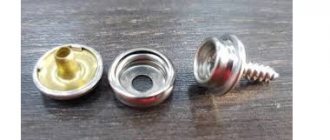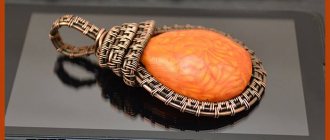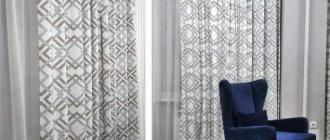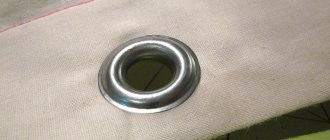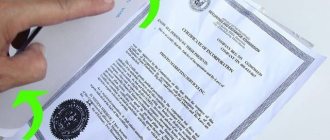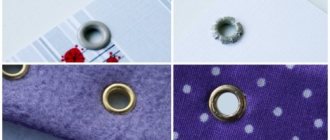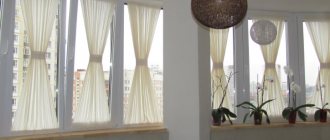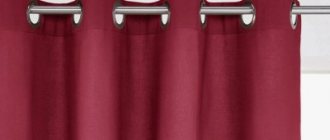Eyelets are rings of two elements for fixing part of the fabric between them. Nowadays, it is a universal device used in many areas. The ring holds its shape perfectly, so it adds strength to the fastening. For the textile industry, eyelets have become indispensable elements. Clothing designers have repeatedly used the structure of overlays to emphasize the beauty of the product. Due to the multidisciplinary use, eyelets have acquired all sorts of proportions. In some cases a flat leg is needed, and in other cases a high leg is needed. The width of the product is also very different: it is designed for both thick ropes and thin laces. In industry, high-strength linings made from modified materials are used. Eyelets are distinguished by shape, although the most widely used is the classic ring-shaped one. In some cases, the installation of eyelets is done by hand. Public master classes will help with this.
Where are eyelets used?
Eyelets are needed to make a smooth hole in any material and protect the cut edges from chafing . In 1901, the fittings were invented for fastening ship sails; over time, eyelets began to be used in sewing clothes, belts, curtains, as well as for assembling documents or other papers into ring folders.
Small eyelets are installed on almost all models of sports shoes, for example, sneakers. The laces are passed through the metal rings. Thanks to this fittings, the item will last longer, the cord will not fray, and the material from which the shoes are made will not deform.
Types of grommet rings
The materials from which this type of fastening is made are varied - from metal to plastic of various shapes and colors.
Installation methods also directly depend on this. A plastic eyelet is much easier to install, but a large load on it is unacceptable! If desired, you can remove it and use it again, but the fixation of the edges of the fabric will be very poor - they crumble and become deformed, and the product looks sloppy.
Colored metal eyelets are much more reliable than plastic ones - they hold the fabric perfectly, preventing it from tearing.
Steel fasteners are considered the most reliable for fastening fabrics, leather parts, and cardboard. But before you install eyelets without tools on clothes or shoes, you will need to practice on unnecessary pieces of material. This is necessary to understand how the work is going and not to spoil the thing.
The most popular way to use eyelets is to attach them to curtains. To do this, you additionally need grommet tape, which is sold in specialized stores. It is used to glue the edge of the fabric, creating rigidity.
The mount itself can have a completely different shape - from circles to animals. The color palette is also huge.
Curtain eyelets will help to form smooth, interesting and neat folds. In order to move such a curtain on the eaves, you do not need to apply any force. The fabric does not wear out on the cornice, and, accordingly, its service life is longer.
Advantages and disadvantages of application
Why eyelets are considered a good invention:
- Curtains with eyelets glide well on a special round curtain. They open silently and easily. The same can be said about paper with eyelets. Such sheets are easy to turn over in a folder.
- Reliable fastening. If curtains on hooks can be accidentally touched and the loops broken, then the eyelets will withstand such a load.
- Aesthetic appearance. Thanks to the fittings, the holes look neat. You can choose eyelets by color, to match the tone of the product, and also choose an unusual shape.
- Clothes and curtains can be washed in a machine without removing the accessories.
The only drawback is that the material on which the eyelets will be installed must be chosen correctly. Many fabrics shrink after washing, as a result of which the hole is deformed, and threads or the edge of the cut material come out from under the fastening of the fittings.
Crop-a-dile installer: description, principle of operation
Eyelet pliers “Micron” NT-2 are equipped with a ruler for measuring the diameter of fittings and a hole punch - the nozzle is located on the side of the working tool, used for elements with a diameter of less than 4 mm.
Micron NT-2 pliers are often purchased by people who are passionate about scrapbooking
The set includes eyelets of different colors
This hand-held device is good because:
- capable of punching holes of several sizes;
- weighs little;
- safe;
- easy to use;
- almost silent;
- takes up minimal storage space;
- performs assigned tasks efficiently.
On the tool's jaw there is a ruler with a regulator for setting the desired distance from the edge
Installation pliers are not universal - the clamp for eyelets and blocks of different sizes is selected individually. Some models are equipped with removable flaring attachments, allowing the installation of elements of two different diameters.
We suggest you familiarize yourself with How and at what height to hang a TV on the wall
Hand pliers belong to the cheapest category of tools, but provide quite good quality for installing eyelets
Impact-type grommet hammers require a hammer to operate, and the process itself will be noisy. The core installer is reliable, convenient, easily punches holes, and installs fittings of the appropriate size. Manual presses are also used to punch the fabric - the fabric is placed on a special platform, secured, and by pressing the lever at the back, a hole is cut corresponding to the diameter of the nozzle used.
Multifunctional punching pliers allow you to make holes of various diameters and secure blocks and shirt buttons
One of the tools suitable for installing grommet fittings is “Fiscars”. It is used for elements with dimensions of 1.6, 3.2, 4.8 mm, excellent for dense, thick materials. Punching and installation is done using parts with springs that are pulled up to a distance of 5 cm.
Using the tool, you can punch a hole and install a grommet, sold in sets of two or three sizes
The “Kangaro” tool is a pliers with a punch and a ruler. Their handle is anatomically shaped to ensure comfortable holding in the hand. The work process is standard: punching a hole, fixing the rivet by lightly pressing the handles of the pliers. The disadvantage is the inability to install parts with a diameter greater than 4 mm.
Kangaro pliers are useful for installing small eyelets in thin material
The hole is punched using a hole punch placed on the side of the tool
A special eyelet hammer is a heavy but compact tool made of steel, all the attachments of which are inserted into each other, like nesting dolls. The minimum size of installed fittings is 6 mm.
The hammer has easily replaceable nylon heads
Working with a hammer is a rather noisy process; it is necessary to place a metal anvil under the workpiece, since the puncture site is not fixed (which in different situations can be both a plus and a minus), there is a risk of the fabric slipping - this will lead to its damage. You first need to mark the installation point for the rivet; the punch is installed perpendicular to the edge of the blade. A couple of blows with a hammer and the leg is flattened and the part is firmly fixed.
Cropodile is the most commonly used manual eyelet installer, having a rotating head and cubes for changing positions, and a switch.
The tool has small feet for vertical storage
The device has almost no restrictions on the diameter of the fittings. He is capable of:
- carefully make holes of several sizes;
- securely mount buttons and eyelets;
- replaces three different tools;
- switch from one mode to another;
- cut through fabric, leather, plastic, paper, thin metal, chipboard, CD and other dense materials;
- can secure the part at any distance from the edge.
Crop-a-dile is capable of installing grommets more than 15 cm from the edge of the material
This eyelet tool is available in a variety of colors. Using the device, it is easy to secure parts with dimensions of 3.2 mm, 4.8 mm, buttons, elements with 8.3 mm pins. To do this, first a suitable hole is punched, then the part is inserted into it and pressed tightly.
“Cropodile” is not cheap, but it is of good quality and reliability
The tool has three positions:
- The first hole is punched with a diameter of 3/16 inches.
Switching from one operating mode to another is accomplished using a convenient switch - In the second - 1/8 inch.
- In the third, the parts are installed.
The photo shows an example of installing a grommet using the Crop-a-dile tool.
There is also a compact version of the Crop-a-dile device for installing eyelets, which differs in that it is not capable of making holes far from the edge of the surface being treated - only within 2.5 cm.
We suggest you familiarize yourself with How to iron a leatherette jacket at home? How to smooth out wrinkled outerwear made of artificial leather, eco-leather and leatherette?
The compact model is made in the form of pliers with short jaws, the length of which limits the capabilities of the tool
Types and materials
Eyelets can be classified according to several criteria.
The table describes in detail the types of fittings and their characteristics:
| Distinctive features | Description |
| Magnitude | From 4 mm to 8 cm in diameter. Small eyelets (up to 2 cm) are used for sewing clothes, for making shoes, and also in office supplies. Large rings are installed on curtains and awnings. |
| Form | The outer edges may have an unusual appearance. For example, for children's rooms and bathrooms, you can purchase accessories in the shape of a flower or animals. Triangular and square grommets are sold for living rooms. For ribbons and flat laces, you can purchase oval eyelets. |
| Material | The fittings are made of metal, wood or plastic. |
| Color | The rings should be in harmony with the shade of the product on which they will be attached. You can buy matte or chrome metal eyelets. A special coating protects the metal from corrosion. Plastic fittings come in a wide range of bright colors, and wooden rings come in dark and light colors, usually coated with a layer of varnish to ensure good glide over the curtain. |
It is important to select the size and color of not only curtains, but also cords or ribbons. For example, shoe fittings should either match the base material or be the same color as the laces.
Punch for eyelets: description, scope of application
To install eyelets, round holes of a certain diameter are required, which are very difficult to make at home with improvised tools. Experience from industries where accessories are used in the production of footwear, printing, textile products and leather goods came to the rescue.
The main purpose of the grommet is to protect the edges of the hole from destruction.
Large companies use the grommet stapler as a tool for filing documents, and the rivets are often decorated with corporate symbols. Industrial enterprises use punches for grommets. Today, many companies offer for sale variants of punches for home use. This hole punch allows you to solve several problems at once: it perforates the material, bends its edges, so no additional processing of the edges is required.
Compatibility with instruments is checked individually each time.
There are the following types of punches for eyelets:
- manual;
- semi-automatic;
- automatic.
The choice of tool for installing grommets depends on what products you want to install.
Let's try to figure out which option you should choose.
It is important to understand the material, how strong the work will be, what the grommet itself will be made of, its shape and range of sizes. The choice of ring size will depend on the functional load of the product
Products come in different colors, shapes and materials.
The variability of the grommet itself will also affect the choice; you can use a metal version made of brass or steel, wood, plastic, coated or uncoated, of various shapes and sizes. Regardless of the type and shape, the fittings consist of two components: a bushing and a washer, so the principle of operation of the punch is approximately the same everywhere.
A hole is made with a punch, a sleeve and washer are applied and secured with a tool.
At the same time, the manual version of the hole punch is in great demand due to its low cost and ease of use in the original version. Usually it includes a punch, with the help of which the hole itself is made directly, a matrix into which the sleeve and washer are inserted, and embossing, by pressing which they are fixed components of the eyelet on the material.
Experts recommend purchasing devices in whole sets, but using universal, multifunctional ones is no less convenient.
Disadvantages of the manual option:
- for different grommet options you will need appropriate attachments for the embossing;
- with a high density of the material used, the process of piercing the material is labor-intensive;
- Not suitable for leather goods.
For “small things”, a hand tool with capabilities limited in terms of the size of the installed products is suitable.
Pros:
- availability;
- use at home.
In order for any eyelet installer to last as long as possible, it must be kept clean, visually inspected periodically, and lubricated with machine oil.
A semi-automatic hole punch is suitable for working with materials of increased strength, since the hole itself is punched automatically by the sharp edge of the sleeve itself
If we choose this option, then the choice of the eyelets themselves is especially important.
Hole punch eyelets must have a sharp edge.
Minuses:
Purchasing specialized eyelets.
Pros:
- versatility (suitable even for working with tarpaulins);
- availability;
- minimum effort;
- performance.
Installation pliers are not universal - the clamp for eyelets and blocks of different sizes is selected individually.
In industrial production, automatic punches are used.
Pros:
versatility in materials and eyelet sizes.
High performance.
- minuses:
- high price;
- weight and dimensions of the punch.
For large eyelets you will need more serious equipment.
How to choose a mounting option
You can install eyelets yourself only if they are plastic or wooden rings. These products are designed to be installed manually. The bushings are easy to unfasten and, conversely, snap into place. Metal fittings are attached using special tools.
The choice of the type of eyelets depends on the material on which they will be attached. For light and elastic fabrics, plastic rings are suitable. They can also be used to attach paper and laces to summer shoes.
Wooden fittings are installed on dense materials, for example, cardboard, leatherette, or curtains of medium thickness. Metal eyelets are used to make holes in rough and thick materials such as leather, jeans or canvas, as well as for thick blackout curtains.
Using available tools
If there is no special press, then installing the eyelets yourself can be done using ordinary pliers. Of course, such a tool doesn’t have many options; the diameter of the eyelets themselves will be limited, but for small diameters, pliers are suitable.
When it is necessary to install bushings with a large diameter, you can purchase a set of punches at a hardware store, but this will not fundamentally solve the problem. If you need to mount large products on heavy curtains, then such a tool cannot be used here.
The diameter and dimensions of the eyelets are specially marked for convenience. The marks determine the length and thickness of the product. It consists of a cap and a stem. The thickness of the fabric or paper being processed will directly depend on the length of the leg. The length is designated by the letter L, and the diameter of the leg by the letter D.
Self-installation without special tools
You can install the eyelets yourself, without special tools. It is important to smooth the material well before installation.
What else is needed:
- sewing threads matching the tone of the main material;
- sewing needle;
- scissors;
- a piece of chalk or soap for marking;
- roulette.
You can install wooden or plastic eyelets yourself without using special tools.
Algorithm of actions:
- Place about 3 cm down from the top edge of the curtains. Make markings (how to determine the optimal distance between the fittings, you can read later in the article) with chalk or soap.
- Attach the eyelets to the fabric and trace along the inner diameter.
- Use scissors to carefully cut holes.
- Remove all protruding threads and fabric fibers.
- The crumbling material can be carefully hemmed.
- Place the lower parts of the fittings under the canvas, and place the upper parts on top. Press the ring with your fingers until you hear a slight click. Repeat with all holes.
In order for the curtains to slide well, the eyelets must be at least 1.5 cm wider than the rod. Paper folder staples, cords and ribbons, on the contrary, must be narrower than the holes in the rings.
Calculation of the distance between eyelets
The distance between the rings depends on the texture of the material on which they will be attached. The thicker the fabric, the further apart the rings are placed . The exception is paper. Here, the distance between the eyelets depends on the location of the staples in the folder, which will pass through the hole.
For attaching eyelets to tulle or other thin fabric, a distance of about 16 cm is considered optimal. On coarse and dense material, the gap should be about 20 cm. Particular attention should be paid to the rule for calculating the distance between the rings when installing them on thick curtains.
The same spacing will contribute to the formation of even and beautiful folds on the curtains.
It is also important to calculate how many rings will need to be installed.
To do this, you need to use the formula A = (b - 2x): 18 + 1, where:
- A – number of holes;
- c – curtain width;
- x is the distance between the center of the first or last eyelet and the edge of the curtain.
It is recommended to place the outer rings 3-7 cm from the edge of the curtain. This way they will look beautiful and the fabric will form an even wave.
Using grommet tape
Eyelet tape is needed to strengthen thin fabrics where the rings are fixed. If the base material is dense enough, then you can attach the eyelets without compaction.
The tape is a strip of fabric with finished edges. One or both sides are impregnated with a special glue, the fixing properties of which are activated at high temperatures.
How to attach ribbon to a curtain:
- Measure the width of the tape and place a point down from the top edge of the curtain, doubling the measurement result.
- Fold this part of the material in half, wrong side inward, and iron well.
- Apply the tape to the edge of the resulting fold, with the glue side down.
- Iron.
- Wait for the fabric to cool, cut off the excess tape on the sides.
- Use a sewing machine to stitch the top edge of the tape to secure it more securely.
For curtains that cannot be ironed, you can purchase grommet tape that matches the color and simply sew it to the top edge of the curtain. Transparent but dense ribbons are sold for tulle.
Marking and preparing holes
Before installing fasteners, you should mark the product. The eyelets should be installed at intervals to prevent sagging of the material between them. Having placed the inserted grommet in the right place, circle it (the sleeve along the outer edge or the ring along the inner edge).
It may also be interesting: Which curtains are best for a stretch ceiling?
Then the holes are prepared. If their diameter is small, the holes can be pierced with an awl. Sometimes a hole punch is used for piercing. To prepare larger holes, punches are used. If there is no suitable tool, you can use a specially made homemade one. To do this, you need to select a tube of a suitable diameter and sharpen one of its edges. The hole should be such that the grommet bushing is inserted tightly, but does not cause tears or deformation of the material. It is convenient to punch holes on a piece of thin rubber or linoleum.
If the holes need to be large, make a cross-shaped cut with scissors and then cut out the excess material. The bushings should be inserted from the front side, and the rings should be put on from the back. The installation of plastic fasteners ends here.
Video of installing plastic eyelets with your own hands:
Installation using specialized tools
You can install the eyelets yourself if you have special tools. Metal fittings are more difficult to fasten; hand strength is not enough for the eyelets to snap into place. Much depends on the width of the ring.
For heavy and thick fabrics, rings with a thick stem are used. In this case, the pressure on the grommet should be very large.
Installing eyelets with clips
There is a type of metal grommet with clips that can be installed by hand using a small hammer. The disadvantage of such rings is the presence of a front and back side. They are usually installed on bags and shoes.
Algorithm of actions:
- Press the ring onto the material so that a dent remains.
- Using the extruded lines as a guide, cut a hole.
- Place part of the eyelet with clips under the material.
- Place a ring with recesses on top.
- Bend the clamps using a hammer.
Then you need to remove protruding threads and fibers of the material.
Installing eyelets using pliers
In specialized stores you can purchase pliers for installing eyelets. The tool resembles pliers. The kit comes with removable attachments of different sizes. They are called punches and matrices.
How to install eyelets using pliers:
- Reinforce the material with grommet tape.
- Attach a nozzle of the required size to the pliers and punch a hole.
- Insert the part of the ring with the leg from below.
- Close with the top half of the ring.
- Install the nozzle into the pliers to close the ring.
- Place the grommet between the closing parts of the pliers and slowly press them down.
It should be taken into account that such eyelets also have a front and back side. It is important to position them correctly relative to the sides of the material.
Press installation
You can install the eyelets yourself using a special press. This tool has a lever and a pressure plane. It is used for eyelets with short and long legs. The set includes punches and dies for rings of different diameters.
How to use the press:
- Strengthen the material with adhesive tape or fold it in half.
- Select a punch of the required size and make a hole.
- Place part of the ring with the leg under the material.
- Place the washer on top.
- Place the desired matrix in the press and gently press the lever.
It is important to ensure that the washer does not slip or move, otherwise the grommet will be installed crookedly. You'll have to remove it and install a new one.
How to install grommets without tools
It is quite possible to rivet the grommet so that it closes the hole without special units; in some cases the result will be better, especially when compared with cheap, low-quality pliers.
Ways to install eyelets using improvised means:
- A bolt with a round head slightly larger in diameter than the grommet. Instead, a bearing, steel ball, etc. are also used. The striker is placed on the walls of the grommet and hit once or twice with a cloth, then the “petals” are bent with the same hammer, striking from the center to the edge of the grommet.
- Phillips screwdriver (or screwdriver bit). The sting is placed in the center of the grommet, on the wrong side, and the handle is lightly struck with a hammer, as if it were a hand punch. It turns out to be a quadrangle - the part is rotated 90 degrees and the blow is repeated. The walls move apart and are tapped with a hammer to make the edging flatter.
- A blade from a stationery knife. It is placed across the block and hit from above with a hammer so as to cut the walls almost to the fabric (or other material). Rotate 90 degrees and repeat the operation. You will need 3-4 such cuts. Then the “petals” are bent and flattened with a hammer.
Advice! To avoid scratching the grommet and staining the material with a hammer or other tools, you should place a craft mat, plywood, or the like under the bottom. material, and on top - a piece of fabric.
Installation technique for curtains or tulle
Before purchasing fabric and curtain rings, you must correctly calculate the material consumption. Considering the fact that when installing eyelets, the canvas will not hang evenly, but will become wavy, more fabric will be required than the width of the window.
Since the standard distance between eyelets on thin fabrics is about 15 cm, to calculate the width of the tulle, you need to multiply the result of measuring the width of the window by 3. A narrow and often repeating wave hides a lot of material.
Thick curtains will require less fabric because the eyelets will be far apart and the wave will remain large and sparse. The width of the window must be multiplied by 2.
Further procedure:
- Calculate the required number of rings.
- Install grommet tape if the fabric is not stiff enough.
- Punch holes and install eyelets.
- Thread the rod from the cornice through the holes.
If the curtain or tulle fabric is elastic, but there is no grommet tape at hand, you can install the rings without it. You should make the holes a little smaller than necessary, then the fittings will not fall out.
Some advice from experts
From the above it can be understood that the process of installing such a device is not difficult and even a novice needlewoman can do it. But if you look into it, many difficulties may arise in the process that need to be resolved somehow. If you listen to a number of recommendations, you can prevent their occurrence.
Before you get started, it is advisable to read the advice from experts:
- If we compare products by installation complexity, the smaller the diameter, the easier it will be to install.
- The question may arise as to which bushings are best to use. Here the answer is obvious - products made of non-ferrous metals, preferably stainless steel. You can identify them using a magnet. Steel ones will be attracted to it instantly.
- It must be remembered that it is more difficult to work with steel; you have to put in more effort when working.
- It is not recommended to install eyelets on a rubber surface. If you do this, then if you miss during a strike, they may simply break.
- Alternatively, you can use a lead plate for work. But she can bend quickly. You will have to level it, and only then continue working.
Thus, with the help of instructions and step-by-step actions, as well as special recommendations from specialists, you can quickly install eyelets yourself. In this case, you do not need to buy expensive factory-made devices. You can use available materials. It would be enough. You need to be able to choose the right diameter of the device and the metal from which it is made.
Our master class will tell you how to install grommets with your own hands using various tools and help you choose the right materials! We'll show you how to install simple eyelets with a manual clamp, as well as how to use special pliers and a press.
Installation on leather materials, shoes
When fixing the eyelets on the rings, it is better to use pliers or a press. It is important that the hole is smooth, so you should punch it with a special nozzle. It will not be possible to carefully cut it out with scissors, as creases and cracks will appear on the skin.
Algorithm of actions:
- Strengthen the area where the fittings are installed by folding the material in half, with the wrong sides facing each other.
- Mark the location of the rings with a marker.
- Select a punch of the appropriate size and make a hole.
- Insert the matrix tool of the required diameter, place the eyelet and secure it.
You need to work with leather only on a hard and flat surface so that the material does not deform and the fittings are fixed correctly.
Curtain sewing technology
Making a curtain begins with processing the top and gluing the tape. A master class with step-by-step instructions given below will tell you how to sew curtains with eyelets:
- Fold it over to the wrong side and carefully iron 2 cm of the top edge of the future product. If the craftswoman does not have much experience, it is best to first draw a straight line along which the fold will go.
- Measure the height of the comb from the smoothed rib. Draw a straight line and iron it inside out again. The cut of the top will be inside, between the layers of fabric.
- Unfold the ironed edge and insert tape with an adhesive layer (grommet) inside. As mentioned above, its width should coincide with the height of the comb - the width of the pressed hem. On thin fabrics, it is advisable to shorten it in relation to the fabric by the amount of allowances for processing the side edges.
- Heat the iron high and iron the folded part of the panel so that the tape inside sticks well. Be sure to perform this step through gauze or a clean white cotton cloth. When ironing thin tulle, you can pre-moisten the gauze.
- On the wrong side, stitch the hem 2-3 mm from the edge, securing it. At the same time, you can sew on decorative braid if the design solution requires it.
- Fold and stitch the side seams.
You may also be interested in: How to choose a mosquito net with magnets - types and design
After the panel is ready, sewing curtains on eyelets involves installing rings. But how to make the eyelets neat, like in the pictures? To do this, you will need the results of calculating the distance between the centers of the rings, a ruler and chalk.
Installation of eyelets
Set aside 1.2-1.5 cm from the side edge. If the calculations were made correctly, the mark will have to be placed a little further than the line. From this mark, set aside ½ of the outer dimension of the ring and mark the center of the outer insert. Do the same on the other side of the tape.
Set aside from the center mark an amount equal to the distance between the eyelets. Place a dot to mark the center of the next ring. Set aside the same segment again, mark and continue until the end of the tape. If everything was calculated without errors, the last mark should match exactly the next time you measure the distance between the eyelets.
If the error and discrepancy are too large, an error in the calculations is likely. You need to measure the distance between the extreme center marks and recalculate the size of the fold, dividing the distance by the number of eyelets. After this, repeat the markings.
Place the outer ring on the comb so that the mark is in the center of the inner hole. Trace a circle inside. Do this for each mark.
Use nail scissors to carefully cut holes for the rings. The eyelets themselves are installed very simply: the lower half is placed under the fabric (from the inside out). The edges of the hole should fit around the bushing. The upper, decorative part is placed on top and pressed until it clicks.
How to hem the bottom of a product?
To make your new curtains look beautiful, you need to know how to properly sew and trim the bottom edge. The almost finished product needs to be hung on the cornice rod. Determine at what distance from the floor the bottom of the curtain should be. This value must be measured from its surface several times, along the entire fabric, placing marks on the fabric.
Remove the curtain and lay it flat. Connect the marks using a ruler. The straight line will be the bottom line. Fold the material inside out along it and iron the fold. From the fold, set aside the desired width of the hem, draw a line, bend the cut along it inward and iron. Stitch 2-3 mm from this last fold.
If you carefully carry out all the operations one by one, then neither inserting eyelets for curtains nor processing the edges of a large product will seem difficult. In this case, the accuracy of measurements for the uniform arrangement of the rings and the accuracy of processing the cuts are important.
Installation on paper products
The easiest way to install eyelets yourself is on paper or cardboard. Those who have never installed such accessories are recommended to practice on paper before attaching the ring to fabric or leather.
Algorithm of actions:
- Use a ruler to measure the distance between the staples that will pass through the holes. According to the result, mark the location of the rings on paper.
- Use a hole punch to punch holes in the sheet. If the hole punch blade is too narrow. You can widen the hole by twisting the tip of a stationery knife in it. Excess paper needs to be cut off.
- Insert the fittings with the foot on the wrong side. Cover the top with a washer.
- Secure the eyelet with pliers or a press.
Since the small paper rings are made of thin metal, they can be secured by hand. To do this you will need some kind of cone-shaped object, such as a nail. It should fit in diameter. Using a small hammer you can secure the grommet. However, you will have to get used to it. The first attempts may be unsuccessful.
Installation of metal products
When using metal products, you must first flare the sleeve, and then proceed directly to installation. For these purposes, metal or wooden bases are used. If flaring tools are not available, round or cone-shaped objects can be used. The diameter should match the eyelets themselves. You can use a bolt with a rounded head.
It must be placed on the product and flared using a hammer with flair, that is, the impact force must be comparable to the malleability of the metal. When the process is halfway done, the bolt can be put aside and strikes directly on the sleeve. The product fixed in this way should not only hold the ring, but also securely hold the fabric with its edges.
Tips for installing grommets on a canvas awning
Tools you will need to install the grommet on the tarp by hand:
- hammer;
- bumper;
- pencil;
- roulette.
Algorithm of actions:
- Make markings, determining the optimal distance between the rings.
- Use a punching tool and a hammer to make holes.
- Place the parts of the eyelets with the leg under the material. Place the washer on top.
- Using a hammer, secure the eyelets to the awning.
It is advisable to fold the tarpaulin in half at the location where the fittings are installed so that the fastening is secure.
Awnings require rings made of durable material. Eyelets must be chrome-plated or galvanized so that the quality of fastening is not affected by aggressive weather conditions.
In addition, a special coating makes it easier for the awning to slide along the rod. You can buy plastic rings. They are easier to install and do not corrode. The main thing is to buy special eyelets for heavy materials so that they fasten well and are made of thick, wear-resistant plastic.
The manual installation method is suitable for those who have experience working with eyelets. The rest are recommended to use professional equipment that reliably solders the parts of the rings together. To attach fittings to a tarpaulin awning, flaring and nozzles for punching holes are often used.
Different types of rings are processed with appropriate rollers. If it is not possible to install the fittings professionally, you can use a hand press. Various dies and punches are always sold complete with this tool, so choosing bits for a specific ring size will not be difficult.
If the awning is intended for frequent use and there will be a heavy load on it, such as shelter from rain and wind during a hike, then reinforcement of the eyelets will be required.
To keep them even stronger and not come off during a sharp gust of wind, you need a lining made of coarse fabric. It is inserted between the 2 halves of the ring before snapping them into place. In specialized stores you can buy reinforcing tape for eyelets. It is sold in rolls of 5-15 m. You can choose the desired color and width.
It is possible to install eyelets on any material yourself. The main thing is to choose the right rings and auxiliary tools.
However, the manual installation method is suitable in cases where the fittings have to be inserted 1-2 times; for constant work with eyelets, for example, when sewing bags or clothes, professional tools will be required.
DIY installation tool
Many devices have been invented for installing eyelets. They are in demand in factories and sewing studios, where speed and accuracy of work are very important. Conventionally, they can be divided into 2 groups:
- Punchers. Used to make holes in fabric of a given diameter. The edges are as smooth as possible. Some punches cut through fabric, others burn through.
- Presses. Used for flaring metal bushings. There are manual mechanical, semi-automatic and automatic. They often perform several functions at once and can place over 1000 rivets per hour. Most hand setters are designed to handle small diameter rivets.
There is no need to buy special devices for one-time installation of eyelets on curtains. They are very expensive and easy to replace.
At home, you can install the grommets yourself:
- sharp scissors;
- centimeter, ruler;
- simple pencil.

